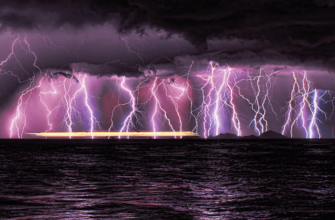The Faroe Islands are a land of sheep, dead-ends and houses with grass on the roof. Did you know that in Faroese the name of the archipelago means “sheep islands”?
Actually, it’s not surprising, because there are one and a half times as many sheep as people here. At school, in addition to the usual subjects, Faroese are taught to slaughter and butcher these animals. They are the main meat here.
Faroes attract tourists with its incredible landscapes, noisy waterfalls, “hanging” lakes and sand dunes. This country has something to surprise even the experienced traveler. So let’s find out more about Faroe Islands.
- Location of the Faroe Islands
- How to get to the Faroe Islands
- Visa to the Faroe Islands
- Faroese national currency
- Official languages of the archipelago
- Faroese climate and best time to travel
- Moving to the Faroes: what you need to know
- List of attractions in the Faroe Islands
- Torshavn
- Gasadalur village
- Lake Sorvagsvatn
- Tindhjolmur Island
- The village of Chednuvuyk
- Westmann’s Bird Rocks
- Saksun village
- Fugloy Island
- Michines Island
- Esturoi Island
- Cape Enniberg
- Kallur Lighthouse
- Faroese culture and customs
- Faroese national cuisine
- Where to eat in the Faroes
- KOKS
- Katrina Christiansen
- Cafe Cibo
- Frida Kaffihus
- Barbara Fish House
- How to get around the Faroes
- Where to stay in the Faroe Islands
- 62N Guesthouse
- Hotel Vagar 3*
- Havgrim Seaside Hotel 1948
- Tips for traveling to the Faroe Islands
Location of the Faroe Islands
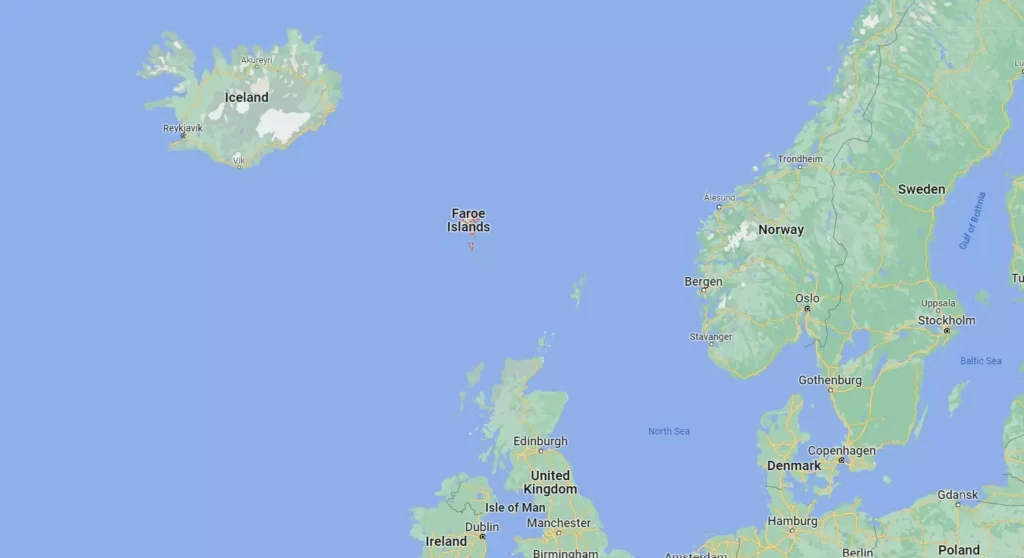
The Faroe Islands are located in the middle of the Atlantic Ocean between Iceland, Scotland and Norway. In 1948 they became an autonomous region of Denmark and now independently decide all matters other than defense and foreign policy.
In all, Faroes consists of 18 islands, 17 of which are inhabited by people. The largest island is Streimoi. It is home to the city of Torshavn, the capital of the Faroe Islands and the main port of the archipelago. Also considered the main islands of the archipelago are Esturoy, Suduroy, Voar and Sandoy.
How to get to the Faroe Islands
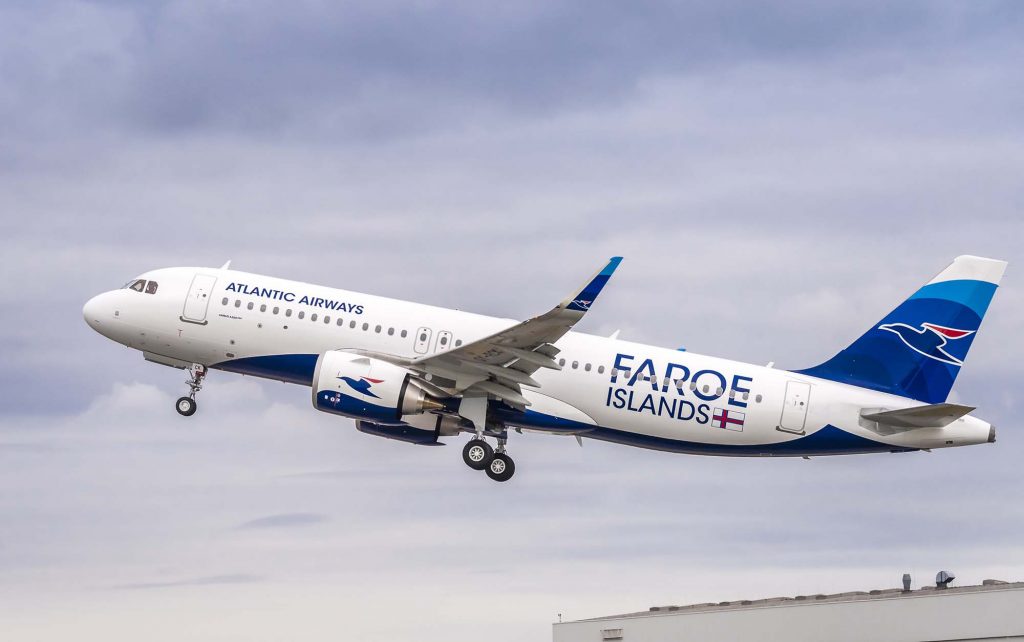
You can fly to the Faroe Islands by plane or take a ferry.
The only international airport in the Faroe Islands is on the island of Vagar. The best way to get to the archipelago is from Scandinavia: Denmark or Iceland. You can fly SAS or Atlantic Airways. The flight takes about two hours.
Ferries to the Faroe Islands depart from Hirtshals in Denmark and Seydisfjordur in Iceland. In summer from Hirtshals ferries go to the Faroe Islands twice a week, and in winter – once. And from Seydisfjordur the ferry runs only once a week in summer.
Visa to the Faroe Islands
To visit the Faroe Islands, you need a separate visa, as they are not part of the Schengen area. So, before the trip you need to get a Danish visa with a note that you can visit the Faroe Islands.
The application must be submitted to the Danish consulate. A set of documents is the same as for the Schengen visa.
Faroese national currency
The Faroese krona is the domestic currency of the Faroe Islands and is considered a variant of the Danish krona. It is pegged to it at an exchange rate of 1:1. The currency is issued by the National Bank of Denmark. But Faroese kroons are only bills, coins on Faroese islands are used Danish coins.
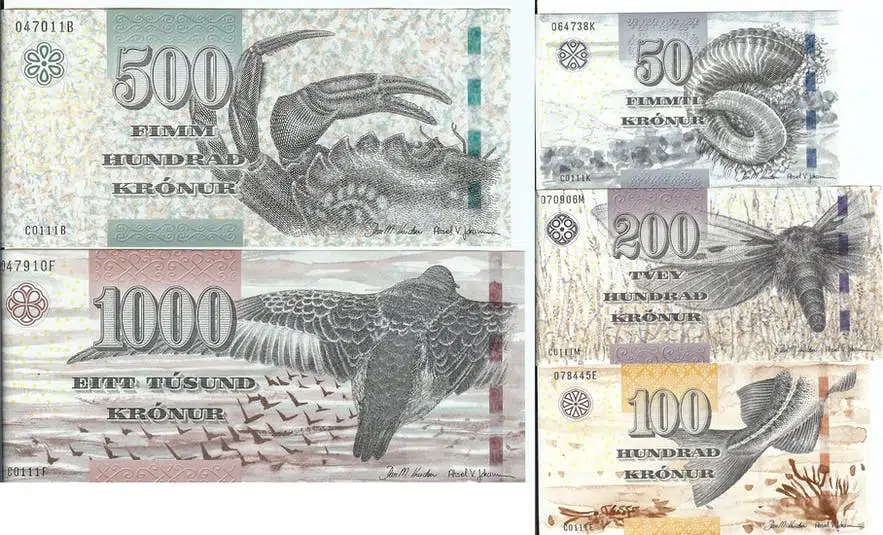
On practically all big islands you can pay by card, but in small villages and on some ferries you’ll still need to have cash.
Except for Faroese kroner, on archipelago Danish kroner and euros are accepted (but only in rare cases for tourists). They give change in Faroese kroner.
If you need to exchange cash, there are banks (Eik) in Torshavn and Klaksvuik where you can do so.
Official languages of the archipelago
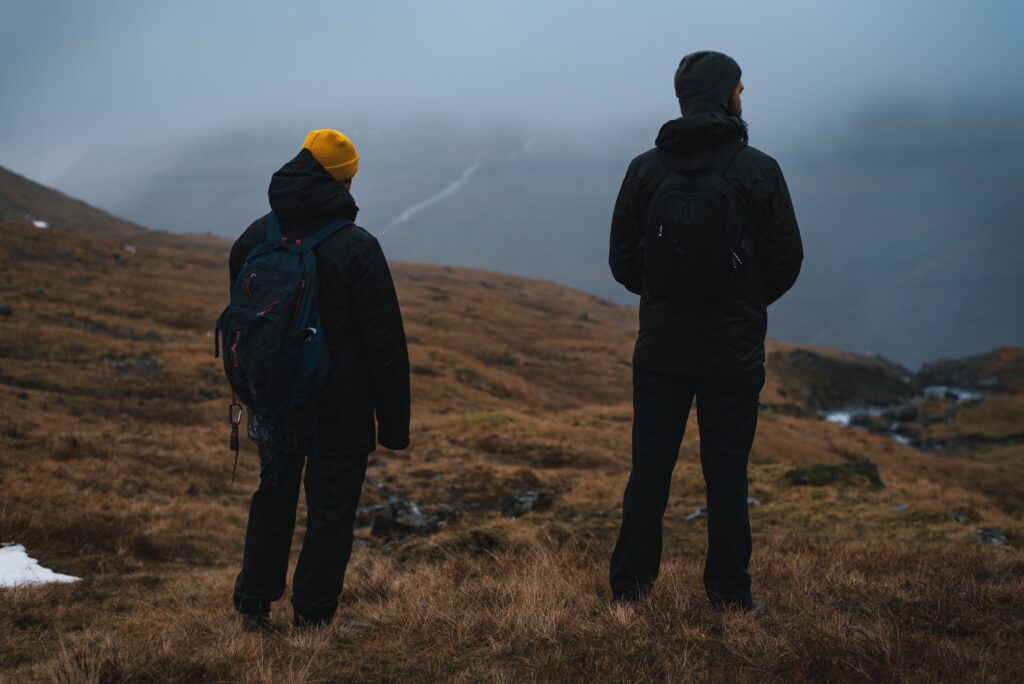
The Faroe Islands have two official state languages: Faroese and Danish.
Faroese is an isolated Scandinavian language that evolved from the common Scandinavian (Old Icelandic) language. In total it is spoken by about 75,000 people not only in the Faroes but also in other countries.
Faroese is the language that is taught in schools and universities, used on TV and in books. It is spoken by 99% of the population, even though it is officially recognized as a minority language.
Danish was a precondition of the Danish government for granting autonomy to the islands. It is studied in schools, business correspondence is conducted, official publications are issued and many media speak it.
Faroese climate and best time to travel
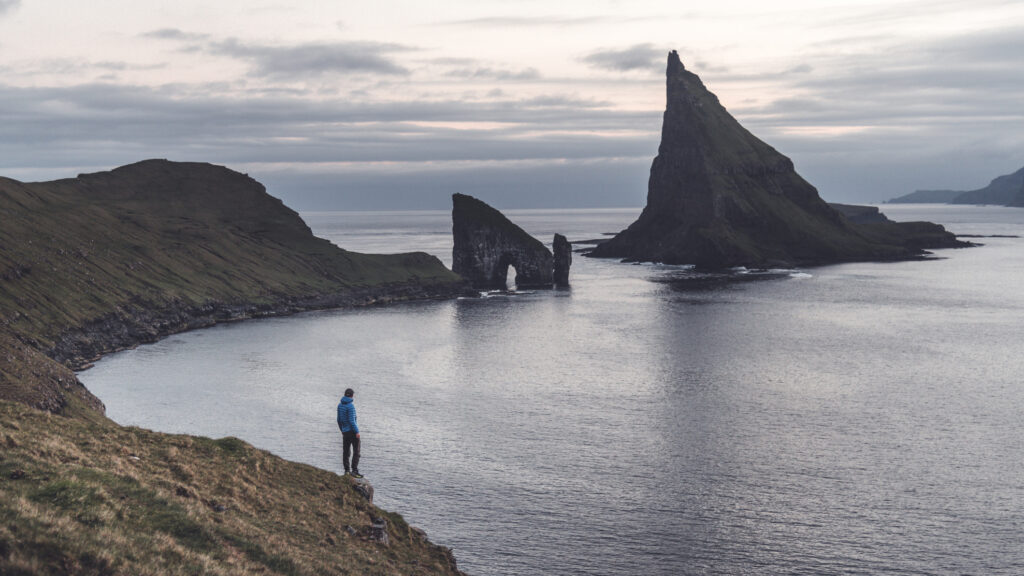
In summer, the average temperature in the Faroe Islands is +13°C and reaches a maximum of +20°C. In winter, it stays above 0°C. The coldest month of the year on the Faroe Islands is January. The temperature during this period ranges from 0 ° C to +4 ° C. Frosts almost never occur here.
According to statistics, it rains on the Faroe Islands more than 9 months out of 12. In addition, cold winds often blow here. Therefore, it is strongly recommended to bring raincoat and good waterproof shoes.
The weather on the islands may change several times during the day: if it rains in the morning, it may be sunny in 2 minutes, and then it rains again and so on.
In the summer, you can watch the “white nights” in Faroes, and in winter – the northern lights.
The high tourist season on the Faroe Islands lasts from June to August. During this time there are the largest number of tourists. Therefore it is best to go to Faroes in May or September.
On average you will need at least 6 days to explore the archipelago, but due to the changeable weather on the islands, some routes may be closed and tours may be rescheduled. Keep this in mind when planning your itinerary and prepare backups.
Moving to the Faroes: what you need to know
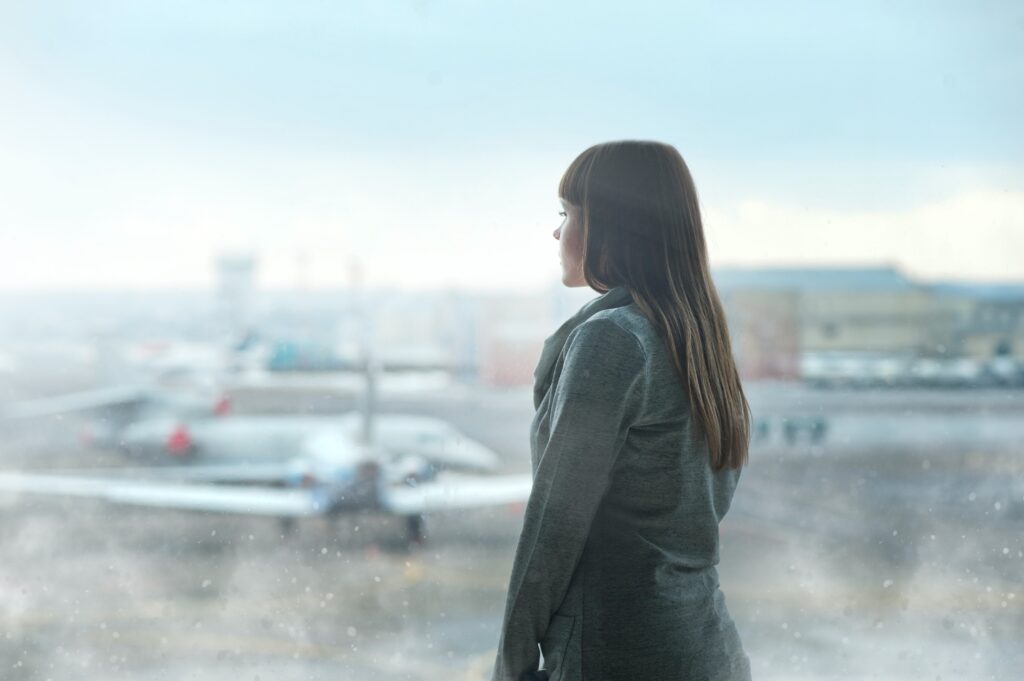
It is possible to move to the Faroe Islands, but difficult. Every year the Danish authorities make the requirements for emigrating to the Faroe Islands stricter and stricter. However, if you have decided to become a Danish citizen, here is what you need to do:
- Get a long-term visa type D;
- Apply for a residence permit (check with the consulate for the list of documents);
- During the collection of documents and the process of obtaining a residence card;
- After the approval of the residence permit after 6 years apply for the Permanent Residence Permit;
In 3 years after receiving residence permit apply for citizenship.
The reasons that will help you get a residence permit:
- marriage;
- sports career;
- adoption;
- academic pursuits;
- conducting business;
- medical treatment;
- development of the Faroese economy;
- political and religious motivations;
- ownership of prestigious real estate.
There are few open jobs for immigrants in the Faroe Islands. The main sectors of the Faroese economy are sheep breeding, light industry and fishing. There are vacancies in these sectors, but preference is given to medics, engineers and social workers. But they will have to retrain first and confirm their qualification with tests.
The average salary and pension in the Faroe Islands is $ 2000.
This region has excellent business opportunities in the sectors of telecommunications, finance, shipping and other areas.
In any case, you will of course have to learn Danish and Faroese.
List of attractions in the Faroe Islands
Torshavn
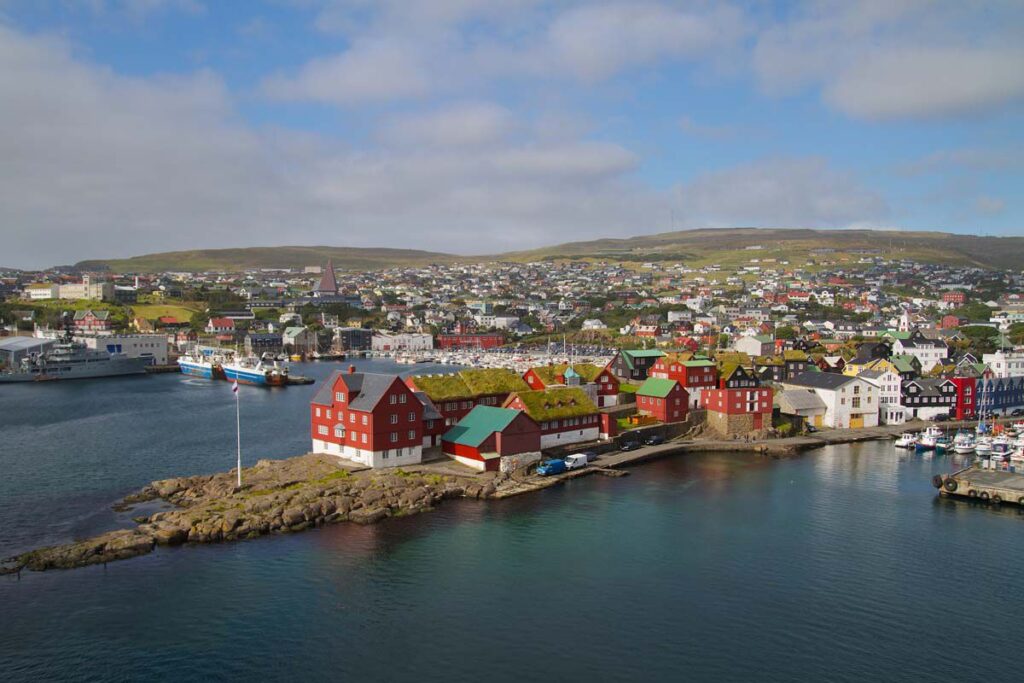
We decided to start our sightseeing tour from the city of Torshavn, the capital of the Faroe Islands.
The first settlers of the Faroe Islands are considered to be the Vikings. They worshipped Scandinavian gods, including Thor, the god of thunder and lightning. Hence the city’s name “Torshavn.”
On a walk through the city, be sure to check out Tinganes, the old town of Torshavn. Here you will find small colorful wooden houses. The roofs of some of them are still covered with grass and sod instead of slate. And in the port are moored small boats. You can walk around the old town in 15 to 20 minutes, but we’re sure you’ll stay there longer.
You can also check out The Faroe Islands Aquarium, which has different kinds of starfish, octopus, jellyfish, exotic fish, and rare sea predators.
there are only 3 traffic lights on the Faroe Islands, and they are all located in Torshavn.
Gasadalur village
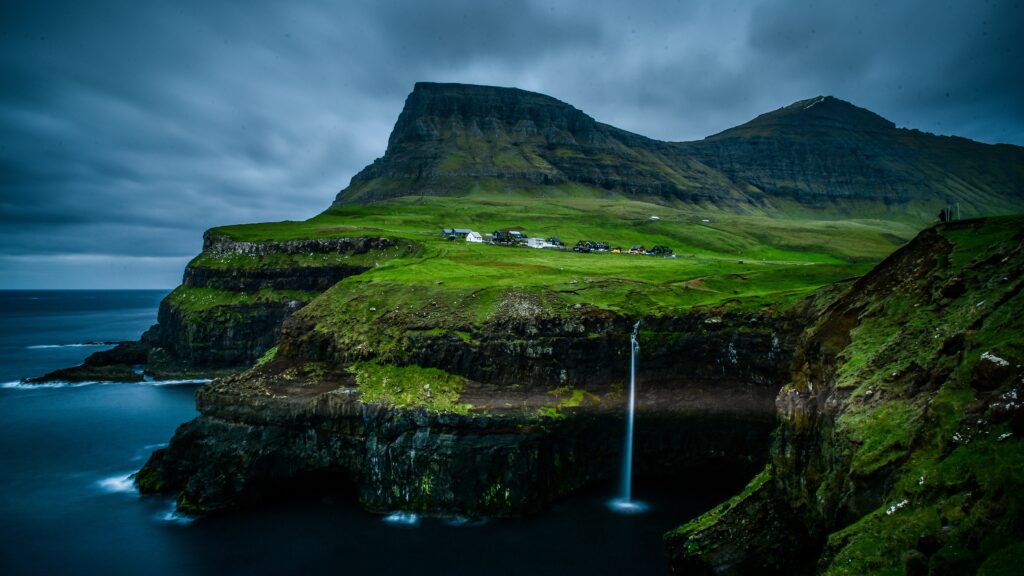
Once enclosed by a ring of high mountains from the rest of the island, today it is one of the most famous landmarks of the Faroe Islands.
In 2004, a vehicular tunnel was built to this part of the island, hoping that more Faroese would now settle there. However, this did not happen. There are now about 16 locals in the village, but given the tourists, there are many more people.
Gasadalur became popular thanks to photographers who took pictures of its amazing views and posted them online, and now the main income of the locals is tourism.
Lake Sorvagsvatn
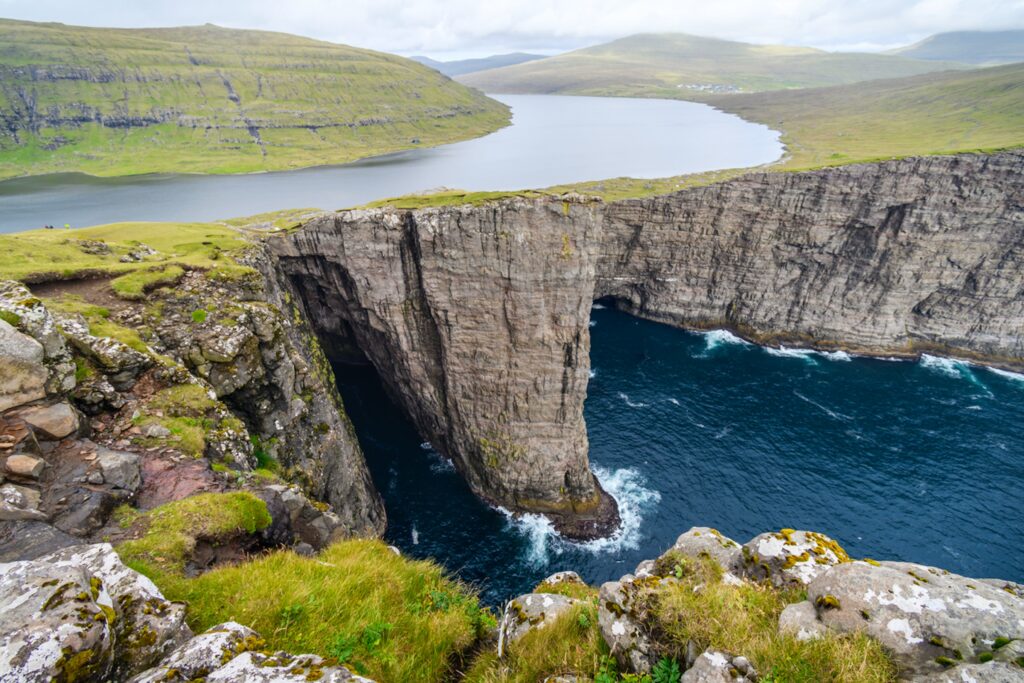
Sorvagsvatn is the largest and deepest lake of the Faroe Islands. It is called a floating lake or a lake above the ocean. Indeed, if you look from certain angles, it seems to be high above the ocean and not connected to it in any way. In fact, only a little more than 30 meters separate Sorvagsvatn from the Atlantic waters, and the water from the lake flows into the ocean, forming the Bösdalafossur waterfall. It is quite difficult to see, as it is hidden among the coastal cliffs.
The most spectacular photos of the lake come from the ocean side, but experienced travelers say that the lake is impressive from either side.
the lake actually has two names. The first is Sorvagsvatn, derived from the name of the village of the same name, which is located near the lake. The second is Leitisvatn. It was coined by the village of Midwags, which called the land near Lake Leity. The inhabitants, who do not want to take sides with either of them, call it Watni, which means “lake” in Faroese.
Tindhjolmur Island
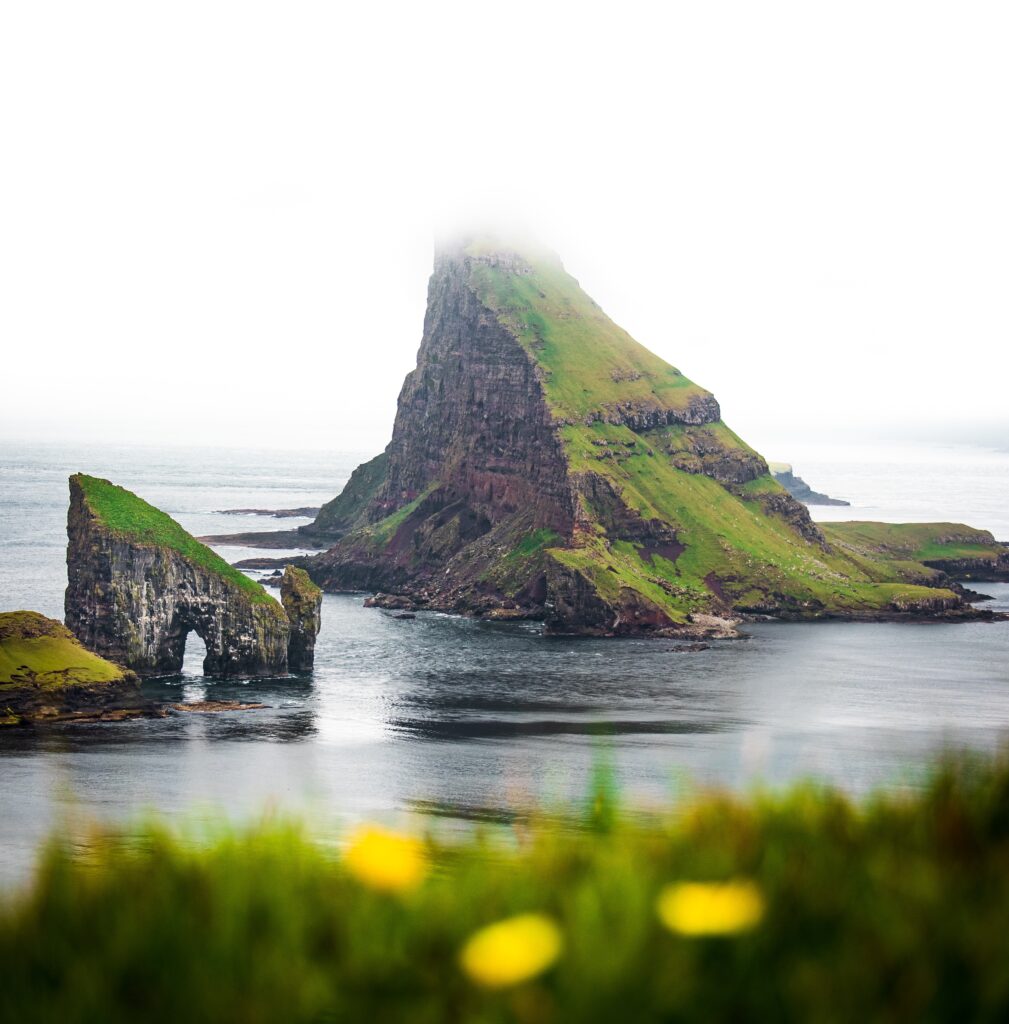
Tindhjolmur is the only Faroese island that is now uninhabited. This island attracts tourists with its pointed peak located almost all over its territory. The best view of the mountain is on the neighboring island from the settlement of Bour.
The village of Chednuvuyk
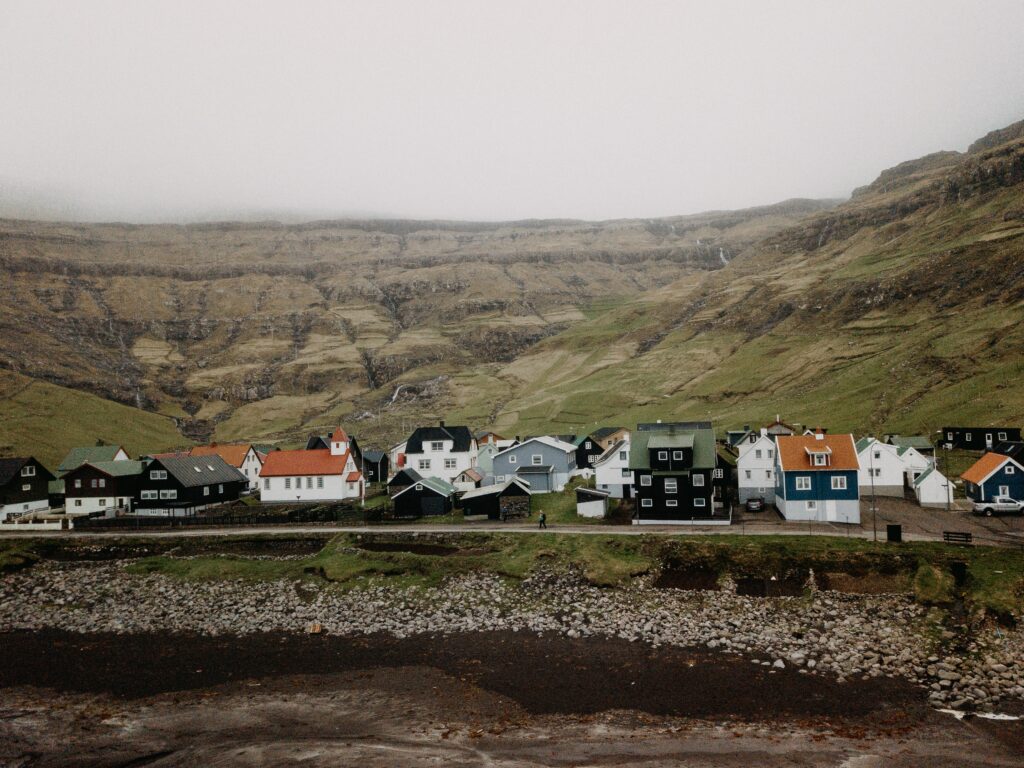
This place is located on the island of Streimoi in a beautiful harbor surrounded on all sides by mountain peaks. On the way to the village you can see Fossa waterfall – the highest in the Faroe Islands.
Westmann’s Bird Rocks
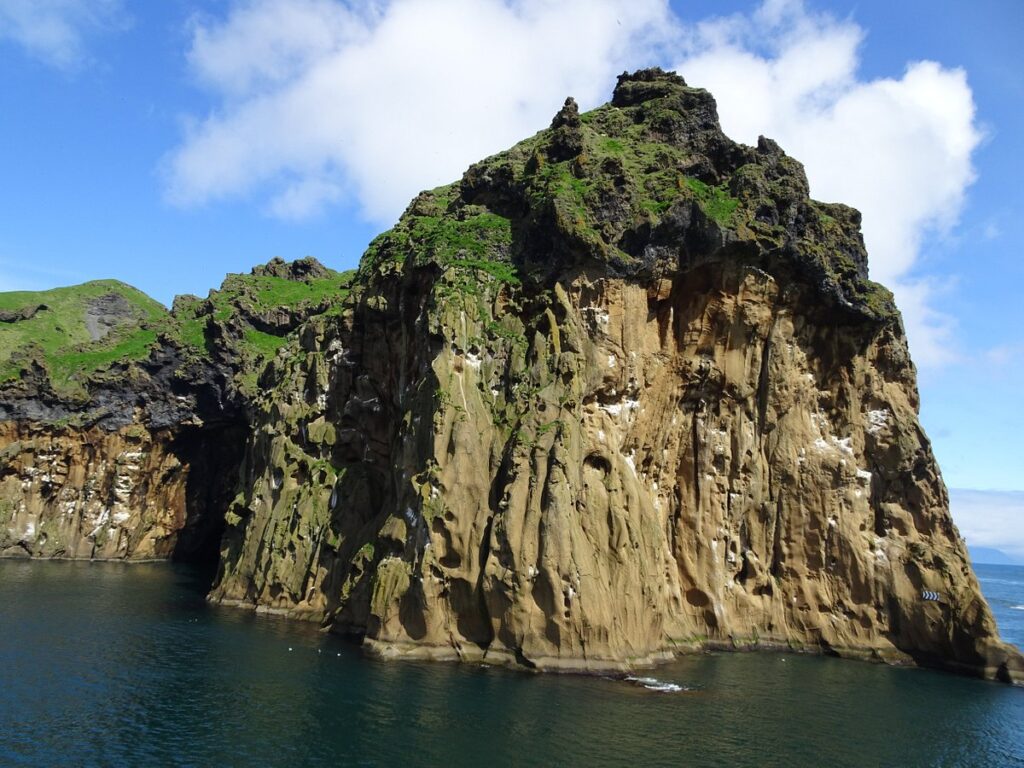
The town of Westmann is also located on the island of Streymoy next to the coast of Westmannabjergini. This coast is a steep rocky cliffs with thousands of seabirds.
We encourage you to take a ferry excursion to admire the caves, gorges, and overhanging cliffs.
Saksun village
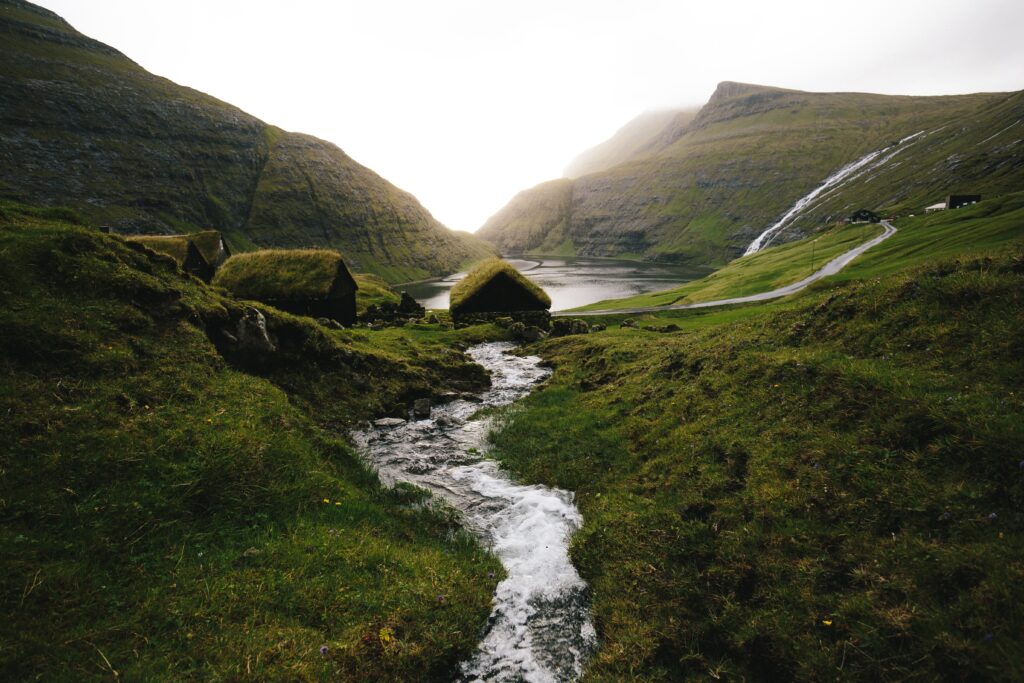
On Streimoi we also recommend visiting the village of Saksun, where old stone houses with sod and grass on the roof are still preserved. It is there that you can experience the authentic atmosphere of the Faroe Islands.
Fugloy Island
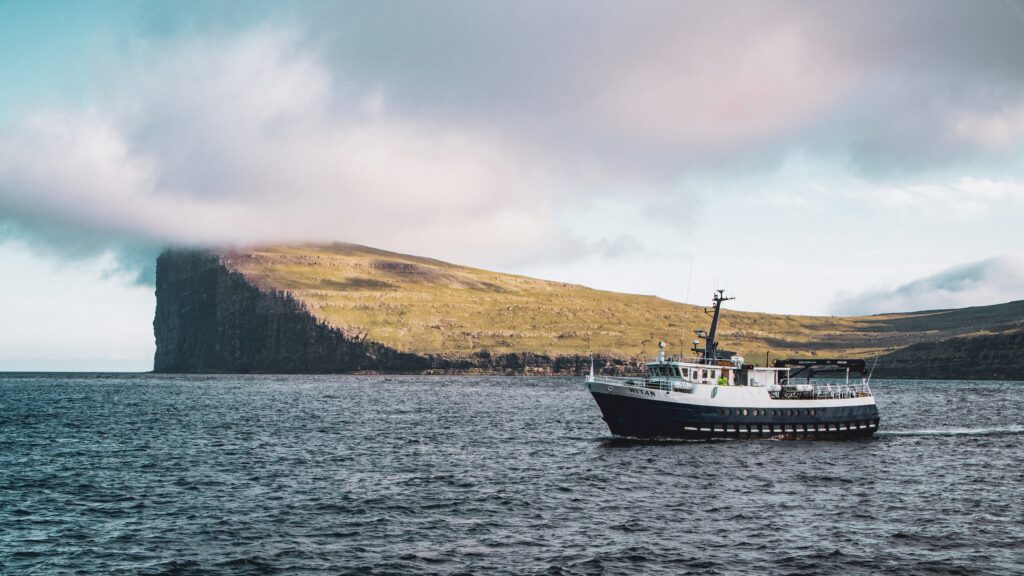
Fugloi means “bird island” in Faroese. It is the easternmost of all the Faroe Islands. Every year, many birds flock here, which breed their young here. That is why the island is so popular among tourists.
Michines Island
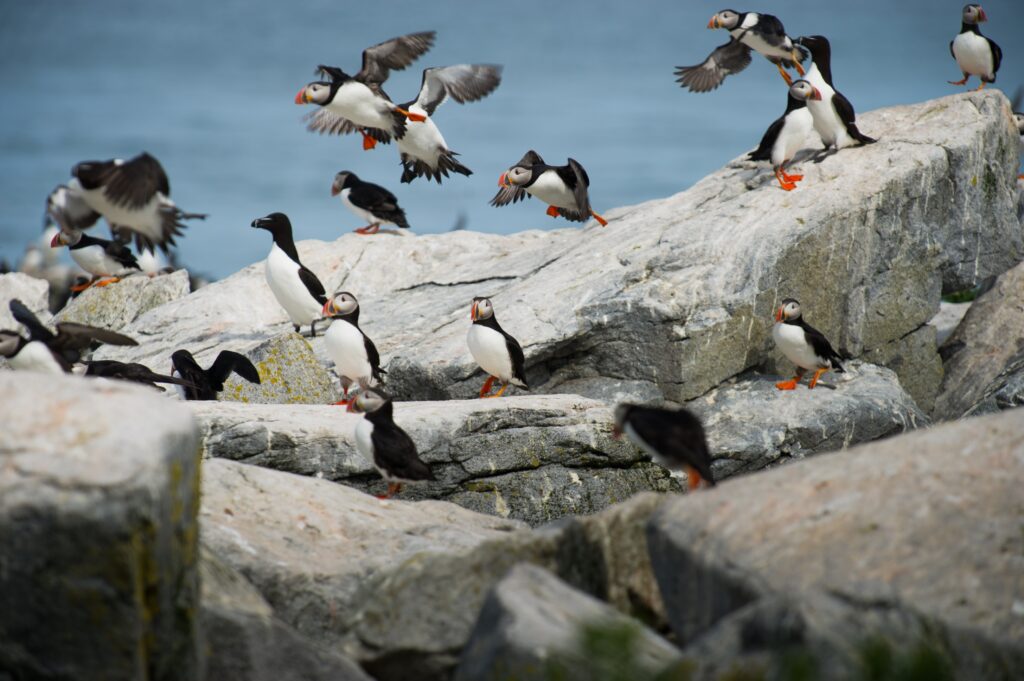
Michines Island is a bird sanctuary, home to tupiks, northern bald eagles, and other bird species. It is the westernmost island of the archipelago.
Tourists come here for the dead-ends and the lighthouse on the edge of the island, because it offers a stunning panoramic view.
Esturoi Island
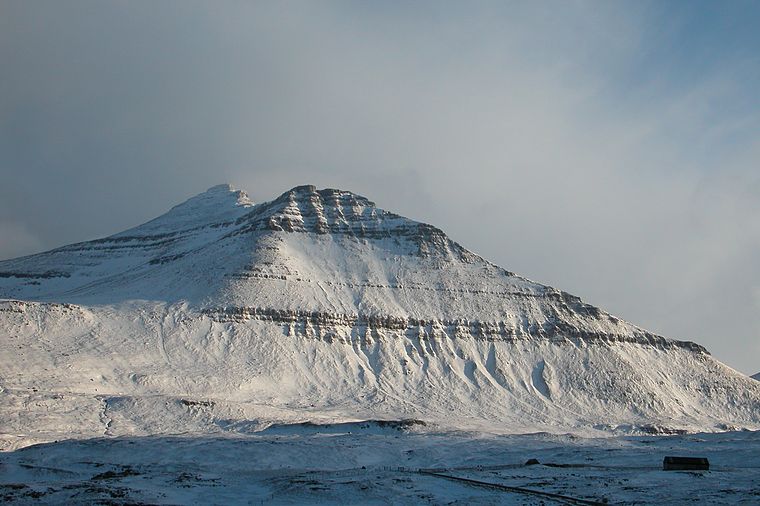
It is here that the highest mountain in the Faroe Islands, Slattaratindur Peak, rises to 882 meters. This mountain is easy to conquer, and the stunning views from it will be your reward.
In Sidruget you can visit the spinning factory, where the best sweaters made of sheep’s wool in the Faroe Islands are produced. We also recommend stopping by the village of Gjogv and admiring the Gorge of Dzhegv.
Cape Enniberg

This cape is the highest in Europe. Its height is 770 meters. It is located on one of the largest Faroese islands – Vidoi. Tourists rush here for breathtaking scenery.
Kallur Lighthouse
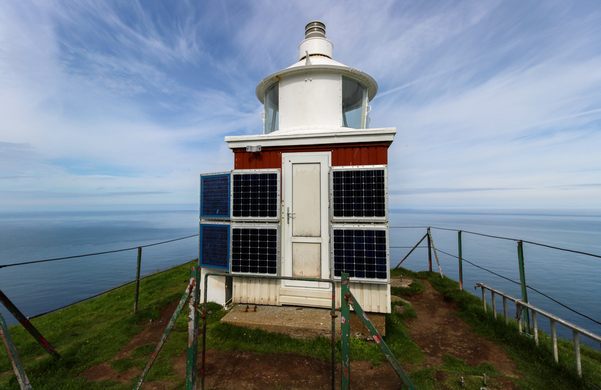
It is not the lighthouse itself that attracts tourists to this attraction, but rather the road to it. Kallur is located on the island of Kalsoi, the most hilly island of the Faroe Islands. It will not leave you indifferent. Just take our word for it or see the photos and fall in love with this island.
We also remind you that you can visit all the sights on your own or you can take a tour to the Faroe Islands with excursions to the most popular places of the archipelago.
Do not forget to take out insurance with Covid-19 coverage to protect yourself during your trip.
Faroese culture and customs
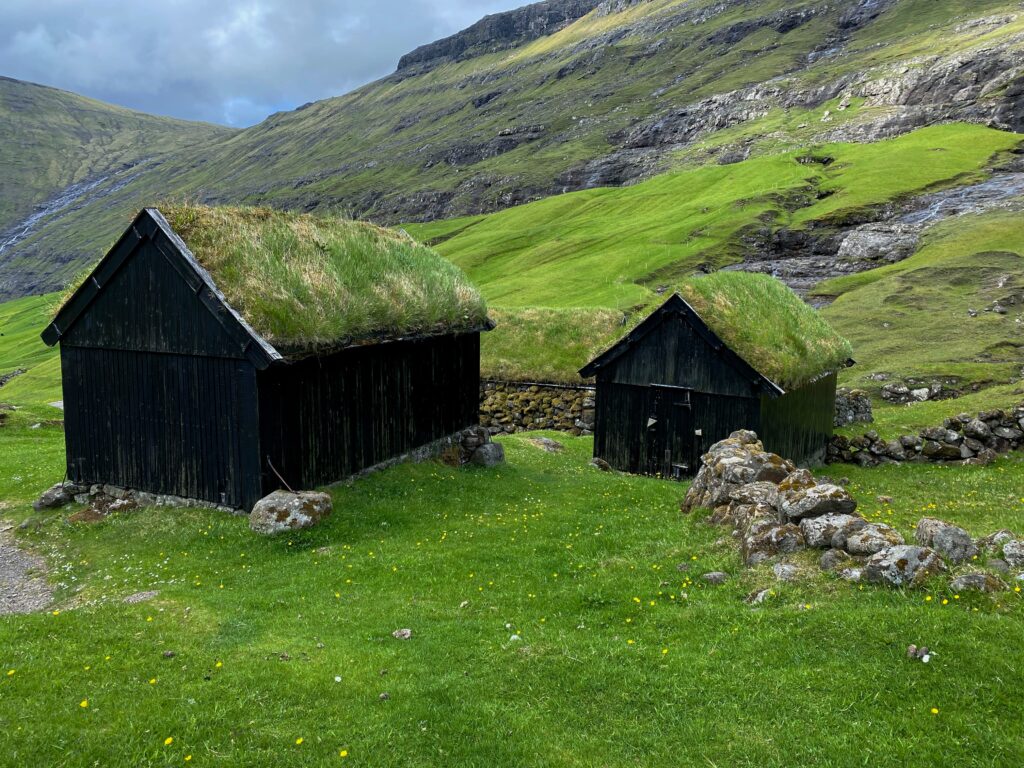
A tradition that immediately catches the eye of all tourists who come to the Faroe Islands is the grass on the roofs of houses. In fact, it’s not just for fun. It is a tradition with practical benefits, because turf is an excellent insulating material.
Also one of the most famous Faroese traditions is the annual slaughter of dolphins and whales, which are called “grinds” on the Faroese islands. Flocks of animals are driven into the bay, closer to the shore, and killed with spears, harpoons and other tools of the hunt.
For the inhabitants of the Faroe Islands it is not just a tradition, it is a rite of initiation of young men into men, a kind of tribute to the ancestors and obtaining meat for subsistence. In the modern world, the need for the latter has disappeared, but the local population continues to conduct the killing of whales.
There are good and cheerful customs on the Faroe Islands, too. For example, Faroese music is always accompanied by the violin and European dances such as the minuet and polka.
Even in ancient times, the Faroese round dance was popular throughout Europe. It is one of the oldest dances. Now it is performed at festivals to the accompaniment of monotonous ballads of Viking times.
You can see it all at the “House of the North”, which is located in Torshavn. There are special evenings for tourists, where you can not only see the aforementioned Faroese round dance, but also taste the national dishes. In addition, opera and ballet performances are organized there.
In the Faroe Islands, religion is part of the culture, so it is also worth mentioning.
More than 80% of Faroese consider themselves members of the Lutheran Faroese People’s Church.
Churches here also serve as cultural centers and venues for various social events. There are churches in almost every village in the Faroe Islands.
many Faroese homes still use whale vertebrae instead of stools.
Faroese national cuisine
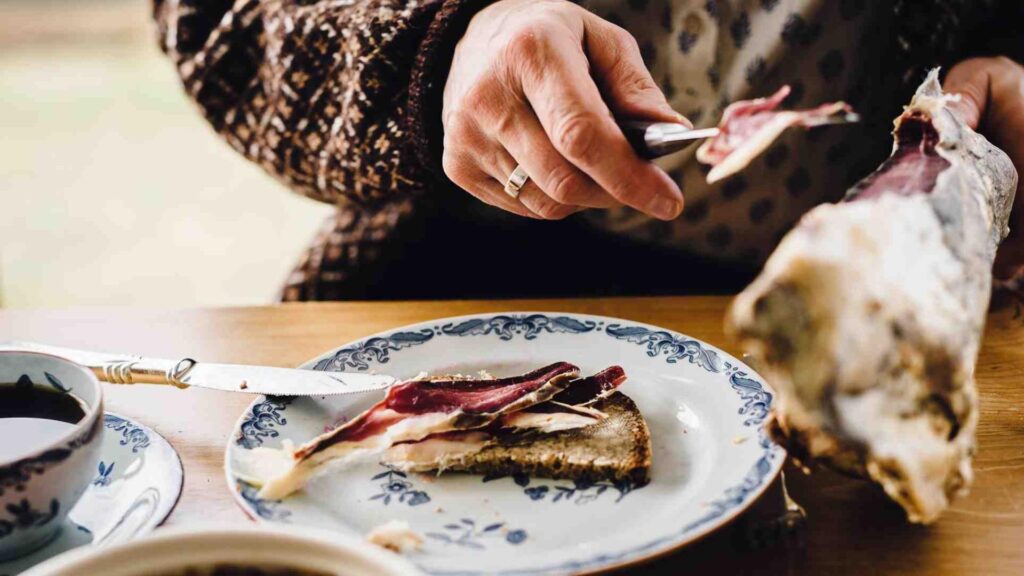
To begin with, a few facts about Faroese food culture:
- Faroese don’t eat much salt or fresh vegetables;
- locals brew their own beer;
- One of the traditional dishes of Faroese cuisine is strips of meat cured in the salty sea wind: “yog-spik” – whale meat, “rastkjot” – cured lamb, “ryuiskjot” – meat cured for several months and “skarpikjot” – meat cured for over a year.
You can taste the national Faroese dishes at the festivals. The largest of them – a festival in honor of St. Olaf, King of Norway, who completed the establishment of Christianity and after his death was recognized as a saint. It is held on July 29 in Torshavn.
On this day Faroese hold rowing and horse racing competitions, national music is played everywhere, traditional Faroese performances and round dances are performed.
Fish is also very popular in Faroes: halibut, herring, cod, flounder and others. It is dried in the same way as the meat is dried.
Despite the large range of fish, there are no fish markets on the Faroe Islands. All because it is easy for locals to go out and catch fish themselves. Therefore, all the fish that is sold in supermarkets is for tourists.
Experienced travelers in their reviews recommend to try “Saltfiskur” – salted cod. This is one of the main products of the Faroese, which they produce for export.
If you want to try whale meat (grinds), try the dish “Grind og spik”. It is sold as a steak with jacket potatoes and fish oil.
One of the locals’ favorite dishes is puffin (deadstock) pie. Every summer after these birds breed, the Faroese catch them, clean them, boil them, grill them, and then make a pie by adding potatoes, rhubarb, and wild berries.
Where to eat in the Faroes
KOKS
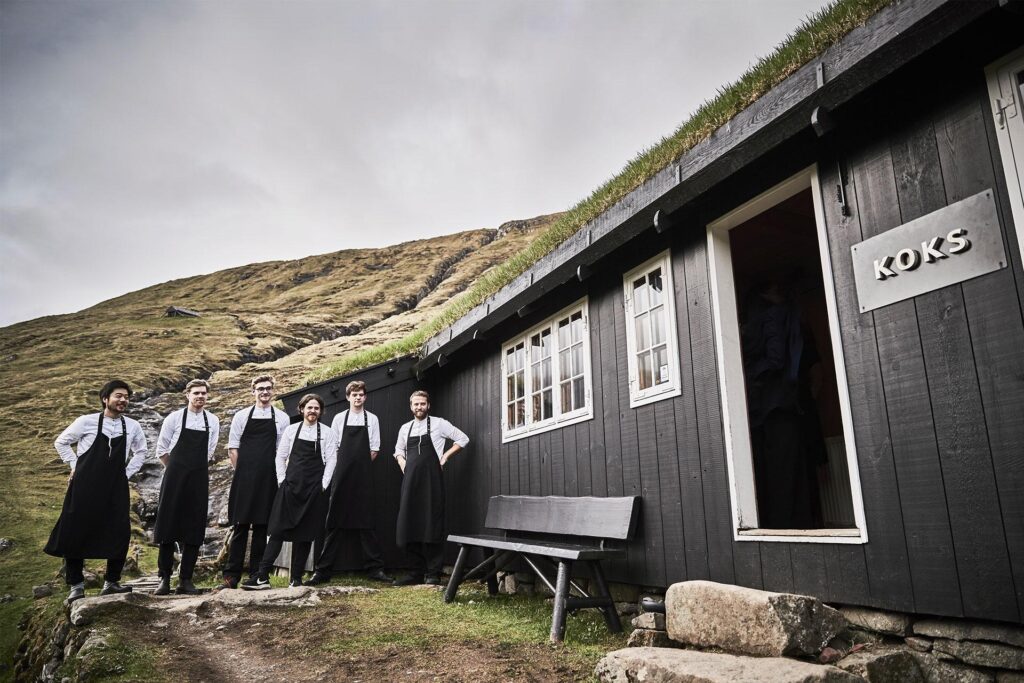
It’s worth noting right off the bat that the Faroe Islands have a restaurant called KOKS with two Michelin stars. Dinner here, of course, is not cheap, but restaurants don’t just get Michelin stars. It’s on the island of Streymoy.
Katrina Christiansen
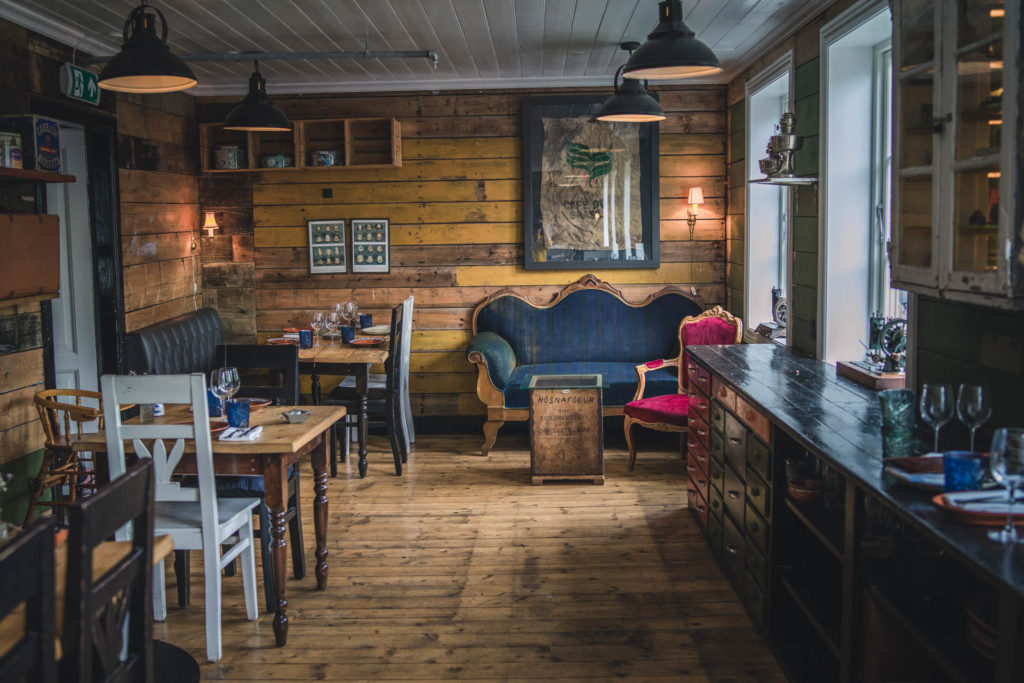
The next popular restaurant among tourists is “Katrina Christiansen”. It is located in the city of Torshavn. The cuisine here is international, combining elements of different culinary traditions. Prices in the restaurant are moderate.
Cafe Cibo
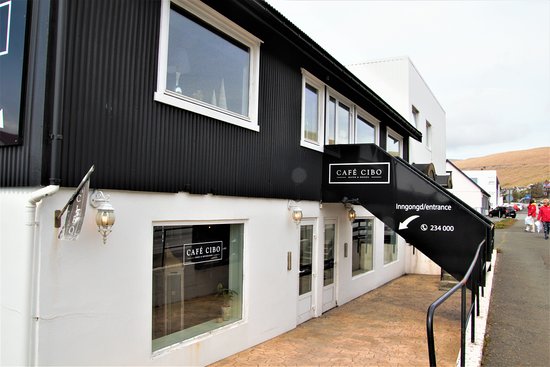
You can have breakfast or lunch at Café Cibo on Eysturoy Island. The cuisine is European and the prices are average.
Frida Kaffihus

For vegetarians and vegans there is a special menu at Frida Kaffihus on the island of Bordoi in Klaksvik. The restaurant prepares modern and healthy dishes.
Barbara Fish House
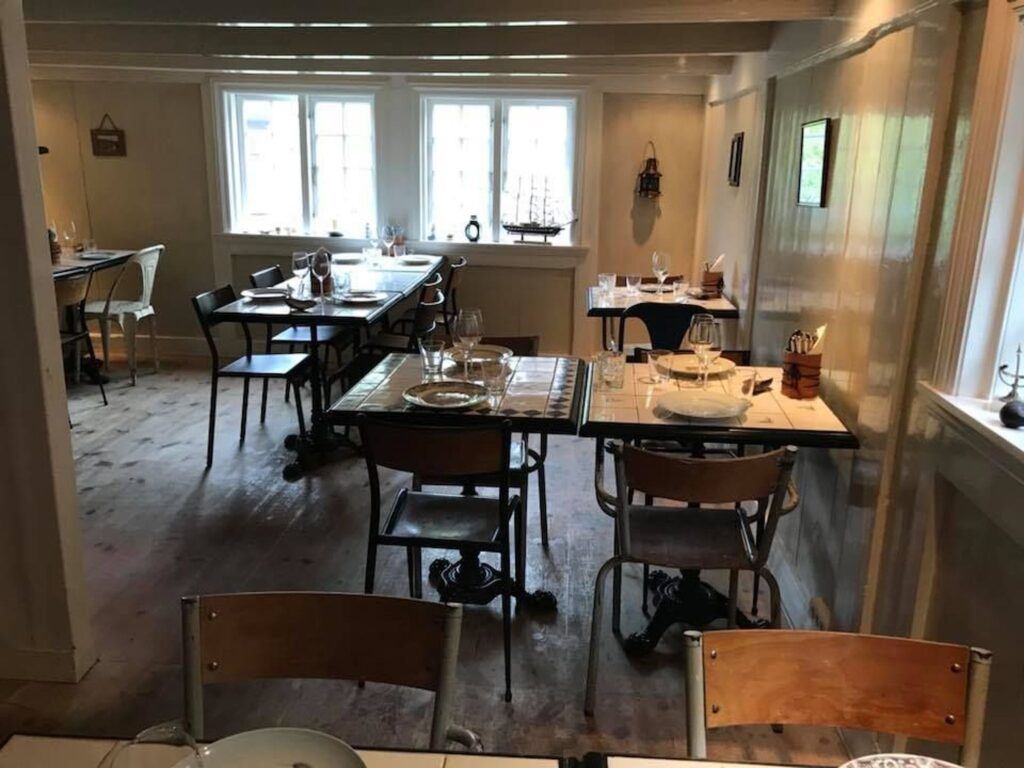
Locals recommend Barbara Fish House as the most Faroese place in Torshavn. The guys work in the evening, so you can come here only for dinner. The cuisine in the restaurant is European and Scandinavian. There are gluten-free dishes. Be sure to make a reservation before you go.
Prices in the Faroe Islands
| Meal in a budget restaurant | € 17.45 – € 80.35 |
| Full meal or dinner for two at a medium-priced restaurant | € 100.71 – € 197.96 |
| Home-brewed beer | € 5.69 – € 15.73 |
| Cappuccino | € 6.15 – € 15.05 |
| Bottle of water (1.5 l) | € 6.35 – € 30.04 |
| Apples (1 kg) | € 12.69 – € 20.36 |
| Local cheese (1 kg) | € 15.73 – € 35.14 |
How to get around the Faroes
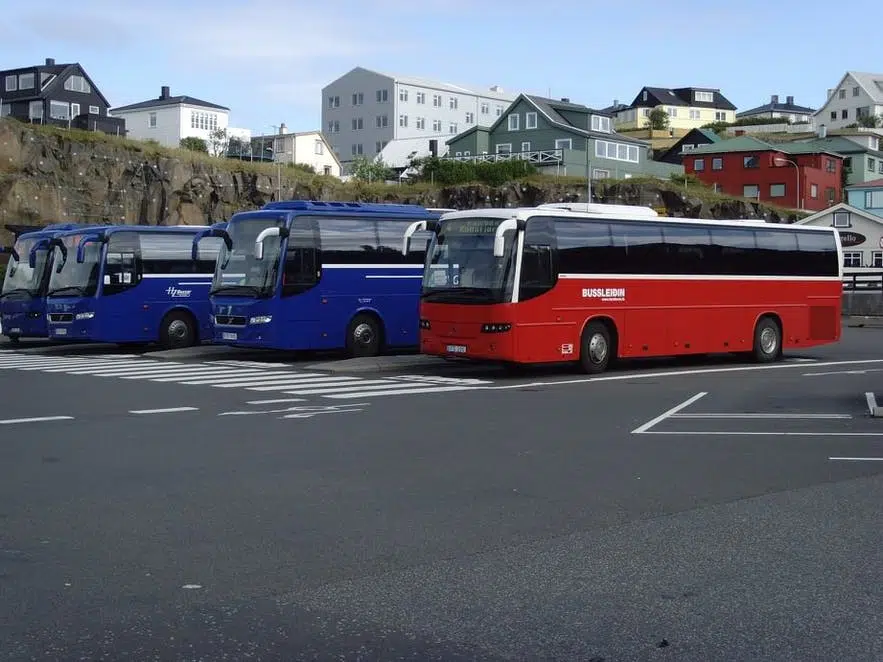
Transport infrastructure in the Faroe Islands is well developed. Tourists can easily travel between all islands of the archipelago.
The most popular forms of public transport are buses and ferries. It is thanks to the latter, the former can ply not only on one island, but throughout the archipelago. In turn, the cost of travel by bus is quite high, as it includes a bus ferry. In one trip there may be 3-4 such transportation.
Trip through the underwater tunnel or over the bridge will cost extra. For example, the cost of travel through the tunnel – € 16.79. The average price for the bus € 15.35, but it may vary depending on the distance. You can also buy a pass for 4 or 7 days, so comes out cheaper. The ferry fare is about € 10. Check the bus schedule on the official website.
Also on the Faroe Islands in the town of Torshavn from the main bus station run buses that carry passengers for free. In a day there are only 4 trips every 30 minutes. In the evenings, weekends and holidays these buses do not run.
Gasoline in the Faroes costs 3.4 euros/liter. Rent a car with insurance and fees for tunnels will cost you from 220 euros per day.
To rent a car you need to have an international driver’s license and a credit card. You also have to be over 20 years old.
Here are some sites where you can rent a car in the Faroe Islands:
https://www.avisworld.com/
https://www.62n.fo/carrental/en
https://unicar.fo/carrental.html
You can buy route maps and timetables for passenger transport at Steinatún kiosks.
Where to stay in the Faroe Islands
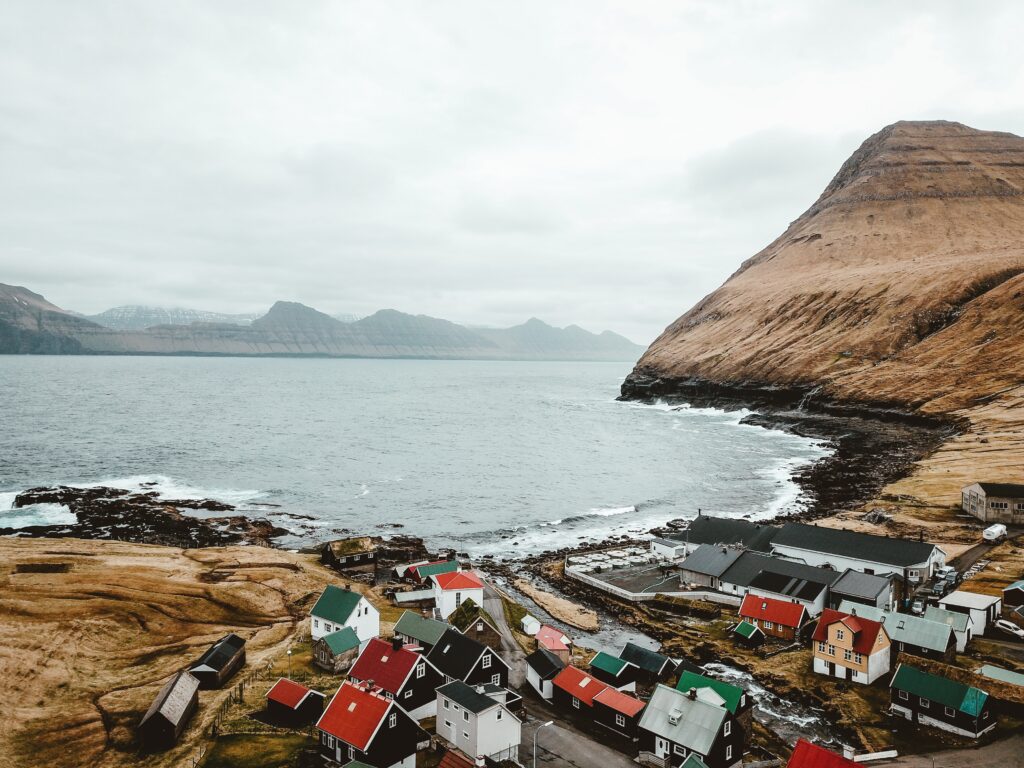
It is better to live on the main islands of the archipelago, as there is the largest choice of accommodation. These islands include Vagar, Streymoy and Escuroi. On smaller islands the choice of accommodation is worse, but if you want you can still find a couple of options.
Tourists often settle in Torshavn. Torshavn is not a cheap city, as, in fact, all the Faroe Islands. Rent a budget guest house will cost you about € 150 – € 220. You can rent a room in inexpensive hotel for €290 at least, and in a better hotel for €320. Apartment for rent costs about €335. The most popular hostels in Torshavn are Bládýpi and Skansin.
Here are a few options for accommodation in the Faroe Islands:
62N Guesthouse
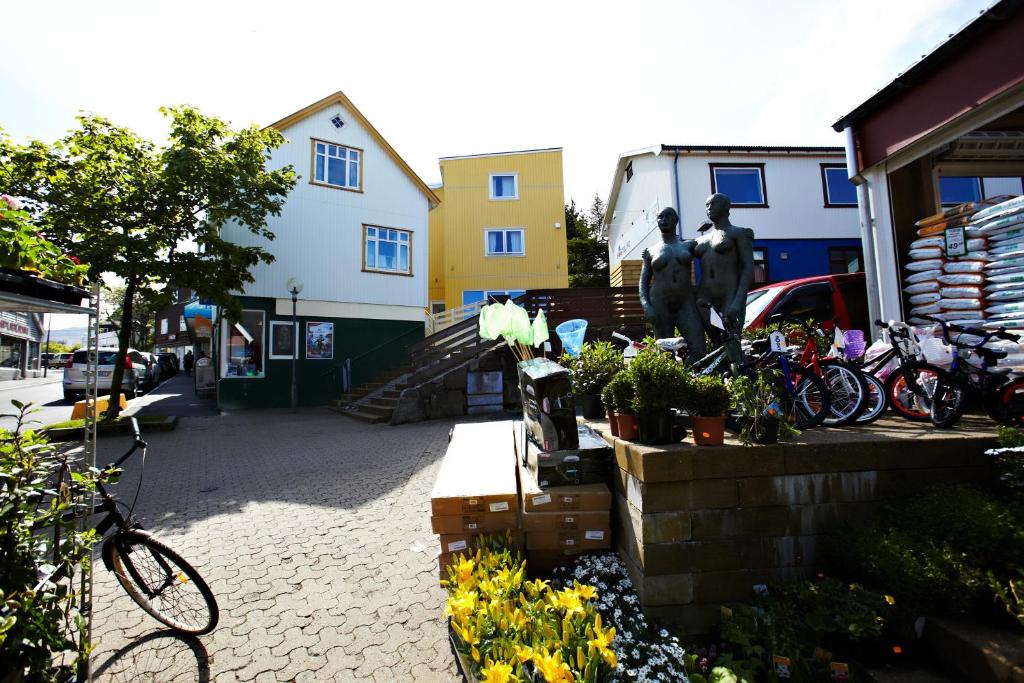
62N Guesthouse is a great option for the budget tourist. The price for a room in this guesthouse starts from € 250 per night. It is located 3 km from the center of Torshavn. The room rate includes breakfast.
Hotel Vagar 3*
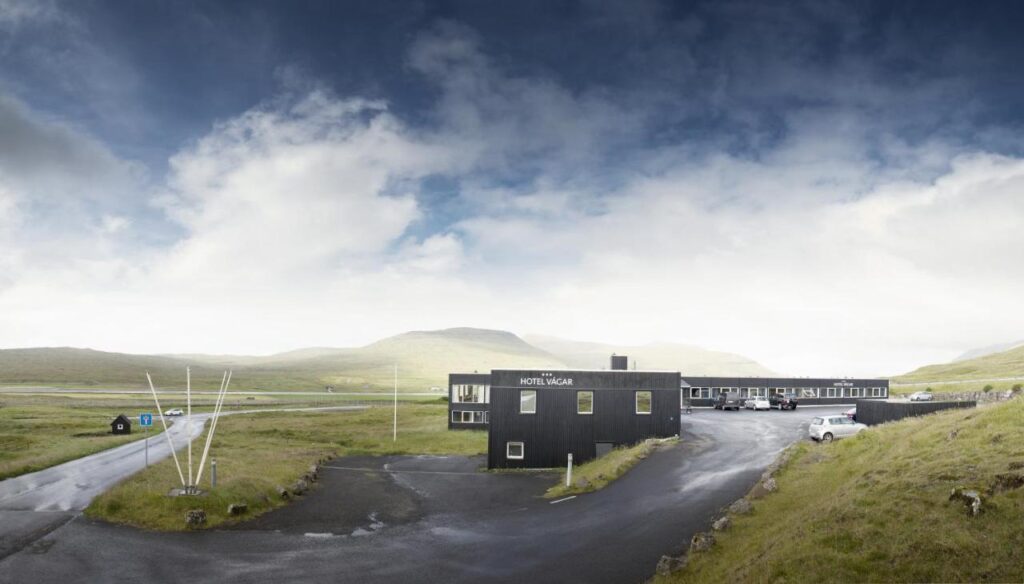
Hotel Vagar 3* is located in the village of Sorvagur just two minutes from the airport. Prices start from €268 per night. The quality is fully consistent with the declared 3 stars. Tourists often choose it because it is close to the airport.
Havgrim Seaside Hotel 1948
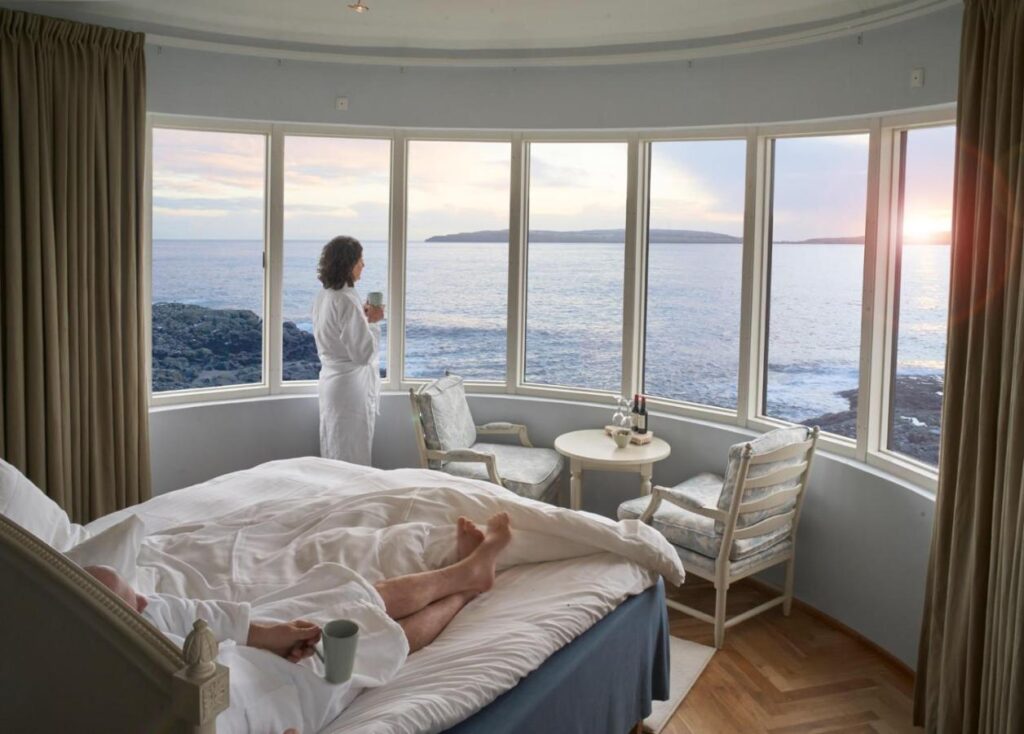
Havgrim Seaside Hotel 1948 – we couldn’t help but tell you about this hotel. A room here will cost you from € 485 per night, but the view is definitely worth it. Located in Torshavn, just 1 km from the center.
Tips for traveling to the Faroe Islands
- Don’t haggle. It is considered inappropriate and unacceptable in the Faroe Islands, regardless of the location or situation.
- Fish can only be caught in certain bodies of water and only on the basis of a fishing license issued by the tourist office. The instructions for fishing in local lakes must be followed without fail. They can be found on all tourist brochures.
- As souvenirs from the Faroe Islands, bring local sheep’s wool knitwear.
- Be sure to bring a waterproof and windproof jacket, a warm sweater, a vest, good and comfortable shoes, a scarf, a hat, and gloves.
- There are quite high levels of ultraviolet light, so take glasses with glass filters.
- If you’re planning self-guided hikes, always bring a detailed map of the area and be sure to notify the tourist office of your hike and its timing.
- In case of fog, do not look for the road yourself. Stop at the place where it caught you and wait for help. Especially if you are hiking along the shoreline and coastal cliffs.
- If you are going on a long journey of more than 3 km, be sure to take a guide and a means of communication.
- In the tourist offices you can buy a detailed booklet describing the most interesting routes of the Faroe Islands.
- Take out travel medical insurance on our website so that you can be taken care of in case of need.




